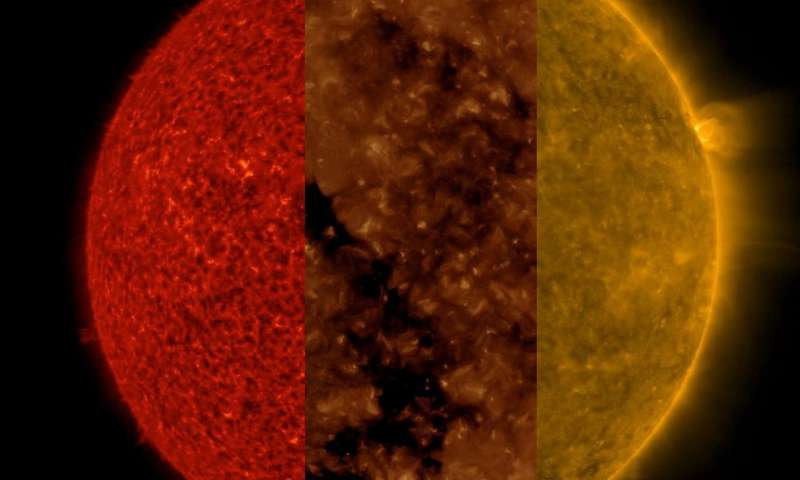A new stunning image captured by NASA’s Solar Dynamics Observatory shows our Sun in three different wavelengths. Even more interestingly, each of the different wavelengths reveals features that are impossible (or almost impossible) to see in the others.

The visible spectrum of light ranges between 390 to 700 nanometers (nm). Anything lower than that is ultraviolet, anything higher than that is infrared. But thanks to modern equipment, we can see things outside our visible range. The Solar Dynamics Observatory (SDO), a NASA mission which has been observing the Sun since 2010, allows astronomers to view the star in many wavelengths simultaneously — from 13 nm to 170 nm. Every 12 seconds, every day, the SDO images the Sun at extreme ultraviolet frequencies.
In this instance, the first sequence (the red one) is taken at 30.4 nanometers. It features very small spicules (jets of solar material) as well as some small prominences at the edge of the solar figure — which are not easily visible in the other sequences. The middle section (at 19.3 nm) shows large and dark coronal holes — a region in the corona which is less dense and is cooler than its surrounds. Again, this is not readily visible in the other two sides. Lastly, the third section, at 17.1 nm, shows strands of plasma waving above the surface, especially above the one small, but bright, active region near the right edge.
This is just a small example of how the SDO is allowing us to better understand the Sun, as well as predict episodes which can potentially affect us. For instance, the Space Weather Prediction Center issued a “minor” storm watch for Tuesday and Wednesday “due to the arrival of a negative polarity coronal hole high-speed stream.” These storms may trigger weak power grid fluctuations and degrade high-frequency radio waves, as well as cause minor damage to Earth-orbiting satellites. They can also affect animals by temporarily distorting their internal compass.
Was this helpful?



